EU General Court Allows the Shape of Guerlain’s 3D lipstick Design To Be Registered As A Trade Mark
Natalia Vodianova wearing Guerlain Rouge G. Image Courtesy of Guerlain.
The General Court of the European Union has ruled in favour of the luxury brand Guerlain in its bid to register the three-dimensional shape of a lipstick design as a trademark.
Background
Guerlain, the LVMH owned luxury French perfume, cosmetics and skincare house applied to the European Union Intellectual Property Office (EUIPO) for registration of a three-dimensional EU trade mark in respect of lipsticks (below). Guerlain claimed distinctive character of the aforementioned shape acquired through use.
The EUIPO Examiner found that the mark applied for lacked distinctive character and dismissed the application. Guerlain lodged an appeal with EUIPO, The Board of Appeal upheld that decision, finding that the mark did not depart sufficiently from the norms and customs of the sector.
On appeal, the General Court of the European Union (July 14th 2021) has annulled the decision of the Board of Appeal. Finding that the mark applied for has distinctive character because it departs significantly from the norm and customs of the lipstick sector.
A closer look at the assessment of the General Court
The standards for assessing the distinctive character of three-dimensional marks consisting of the shape of the product itself are no different from those applicable to other kinds of marks,” the court noted. Though the perception of the average consumer in the case of a three-dimensional marks relating to the appearance of the product itself, is inevitably not always the same as in the case of 'a word or figurative mark’ that consists of a sign independent of the appearance of the goods it designates because average consumers do not usually assume the origin of products based on their shape or that of their packaging. Therefore, it follows that when a three-dimensional mark consists of the shape of the product for which registration is sought, Only a mark which, in a significant way, diverges from the norm or from the habits of the sector and, as a result, is capable of fulfilling its essential original function is not devoid of distinctive character within the meaning of that provision
Counsel for Guerlain emphasised that ‘the aesthetically very successful aspect of the shape of the brands product the ‘novelty and originality’ as well as ‘the reception of the product. and the reaction of the press’ as indicative factors for concluding that it deviates significantly from the norm or the habits of the sector.
In response, The General Court confirmed that in assessing whether the three-dimensional trademark has distinctive character this is not based on ‘the originality’ or an underusage of the shape of the type of mark applied for in the field to which the goods and services concerned belong. While, a three-dimensional mark consisting in the shape of the product should depart significantly from the norm or customs of the sector concerned, the mere ‘novelty of that shape’ is not sufficient (alone) in order to conclude that there is distinctiveness, since the decisive criterion is the ability of that shape to fulfill the function of indicating commercial origin.
According to the General Court the fact that the goods have a quality design does not necessarily imply that a mark consisting of the three-dimensional shape of these products allow the consumer to distinguish them from those of other companies. However, It notes that it is not inconceivable that the aesthetic aspect of a mark consisting in the shape of the packaging of a product, may be taken into account with other factors to establish a divergence in relation to the norm and customs of a sector, provided that taking into account the aesthetic aspect of the mark applied for does not amount to an assessment of the attractiveness of the product in question or lack there-of, which is by definition subjective, but is done in accordance with the case-law with the aim of determining whether that product is capable of generating an objective and uncommon visual effect produced by the specific design of that mark in the perception of the relevant public.
Conclusively, taking into account the images put forward by Gurelein to the Board of Appeal as constituting the norm and customs of the sector concerned, the General Court found that the shape in question is uncommon for a lipstick and differs from any other shape existing on the market. The court observed, first of all, that the shape applied for is like that of “a boat hull or a baby carriage.” most of which represented cylindrical and parallelepiped lipsticks. Next, the presence of the small oval embossed shape is unusual and contributes to the uncommon appearance of the mark applied for. Finally, the fact that the lipstick represented by this mark cannot be placed upright reinforces the uncommon visual aspect of its shape.” On this basis the General Court held that the mark applied for has distinctive character – as the relevant public would be surprised by the memorable shape and will perceive it as departing significantly from the norm and customs of the lipstick sector.
This ruling holds value for fashion players. In the fashion and luxury industries logos alone often do not shape up as being the sole way to differentiate a brands product. Especially where a brand has a diverse product offering. The General courts recognition of the distinctive character of shape mark will no doubt provide hope for businesses wanting to protect distinctive design elements of their products.



